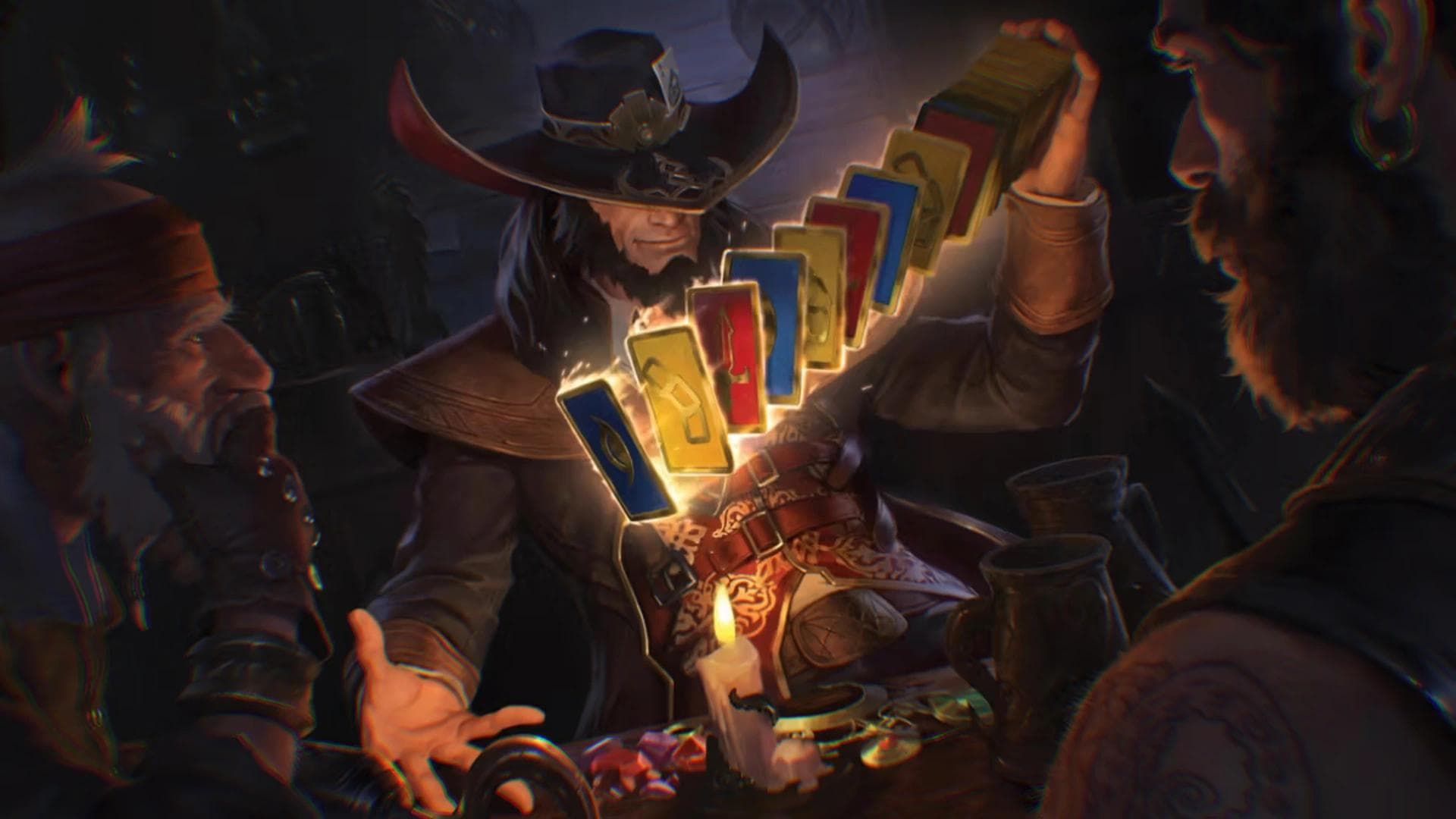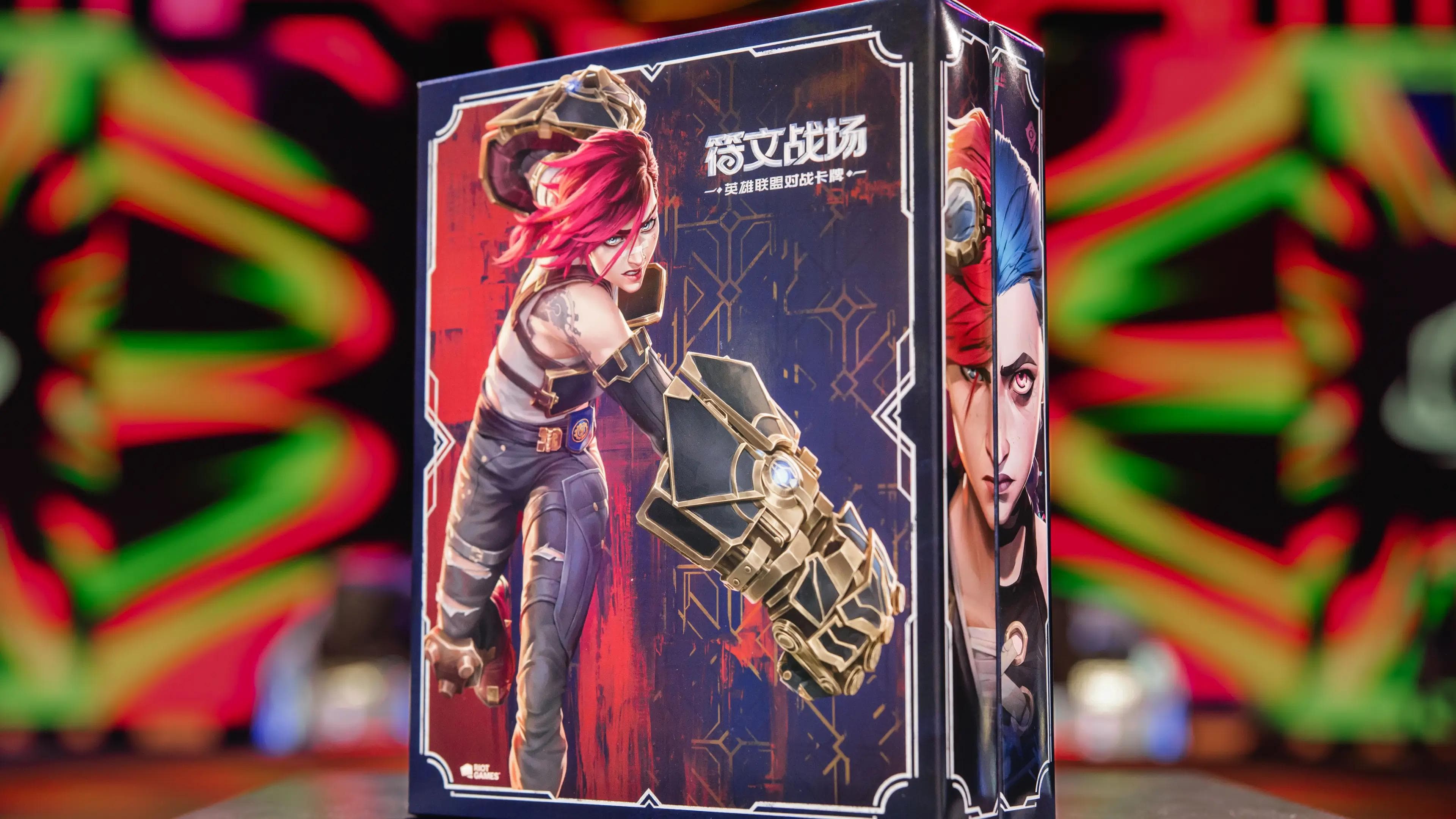"Two names were very close, but Riftbound ranked slightly higher"
On October 31, three months after its exclusive launch in China, the English version of Riftbound, Riot Games’ latest trading card game, was officially released. Demand was so strong that the initial stock quickly sold out, underscoring the early success of the publisher’s new project. As with its other flagship titles — most notably League of Legends and VALORANT — Riot has made no secret of its ambition to develop a competitive ecosystem for its card game. Executive Producer Chengran Chai spoke with Sheep Esports about the origins and future of the TCG, reflecting on the game’s creation and Riot’s long-term vision for Riftbound.
How did the idea of Riftbound come about?
Chengran Chai: "At Riot, we are always looking at new game genres and new spaces. We have a lot of card game players among our writers as well. We had an interesting opportunity to look at the TCG space within China at the time. It was relatively open, not as many competitors yet. We had a lot of existing assets we could leverage, talented game designers for a card game, and a huge fan base that follows esports and competition. We also know what TCG players would like to have in a game and their experiences around it. That was the early foundation of why we should make a game like Riftbound. We got the project greenlit, got funding, and proved our game thesis that we could make a fun game. Then we saw a lot of interest not just from China, but also from players globally. So we pivoted the game to make it global in scope and decided to launch it worldwide. That’s how Riftbound came about.
How was the development process? How long was it from the first day to the launch of the first box?
Chengran Chai: It was a relatively fast game development process. The project was greenlit officially in February 2024. We launched in China on August 1st of this year and globally in English on October 31st. So, around 18 to 20 months for the full schedule of game development.
You worked with a lot of artists, how did that happen?
Chengran Chai: One of the great things about launching Riftbound within Riot is that we already had access to a lot of art done for our other games. For example, Legends of Runeterra, which is a digital card game, has a ton of great card art. We leveraged much of that artwork. For set one, we also made alternate arts of our champion unit cards using existing skins and splash arts from Wild Rift and League PC. For Origins, we had a set of overnumbered cards done specifically for it. Riot artists volunteered to draw pieces for the twelve champion origins, and those turned out to be amazing.
How did you choose the name Riftbound?
Chengran Chai: That was an interesting exercise. We went through a long brainstorming process, filtered out names that weren’t available or legally usable, and came down to a top list of five names. We tested them with different audiences: active League players, churned players, and others. After the testing, two names were very close, but Riftbound ranked slightly higher, by like half a point. After a lot of internal debates, we ultimately decided to go with it.
What was the other name?
Chengran Chai: The other name was Runekeeper. I'm actually kind of quite glad we didn't go with it, because it sounds too specific for League players. It's a card game, and we obviously use runes in our game. But I think maybe that was a bit too specific to talk about the game mechanics. Riftbound felt broader.
What has been the feedback since the launch of Riftbound in China?
Chengran Chai: It’s been really positive. We have gotten a lot of existing players from other TCGs to come over, to go to the game stores, and to try the game. We've also got new players trying a TCG for the first time. These are players who traditionally wouldn't have tried a TCG, but because it's Riftbound, it's the League of Legends IP. They’re enjoying it, and the engagement level is great. We feel really good about both the number of players that we're bringing into Riftbound as well as their level of engagement. But we're only in month four of China's set one release. The meta is still evolving, which is healthy for the game. The presale performed really well in the West, too. There’s been high demand, lots of excitement, and many players sharing their experiences online. I’m very happy with the global launch performance.
Did you expect this level of hype?
Chengran Chai: We knew the IP wasn’t small, but the hype has been greater than expected. We have seen other game launches, Star Wars, One Piece, etc... So we had some idea of what the demand might be. It got a little bit crazy in terms of the orders. Orders were higher than we anticipated, so we asked our manufacturing partner months ago to print more cards. What's on the market today is wave one of the products being available; there are more products becoming available over time. Because we believe Riftbound should be accessible. Players should be able to buy cards at a reasonable price, not inflated ones. That doesn't feel healthy or right to us. And so we want to make sure that there's sufficient supply so that for those who want to play, they can play at every single place.
Do you see it more as a playable game or a collector’s game?
Chengran Chai: For us, Riftbound is first and foremost a game. It’s fun to play both 1v1 and in multiplayer settings with friends. But we know there are collectors, so we wanted to come up with an approach that fundamentally allows you to have both of those types of fun with the same game. We have products like overnumbered cards for them, but you don’t need those to play. The regular cards are very accessible and drop pretty frequently to play the game.
What are your ambitions for the competitive scene?
Chengran Chai: Our players are very competitive and care about integrity. The players coming into the scene want to play and want to win. During the Shanghai Major regional qualifier with 2,000 players, there was a cheating incident on Sunday. We caught it, verified it, and issued a disqualification, a one-year ban, and withdrew all awards of the player. The tournament ended on Sunday, and we issued all those on Monday afternoon. The community reacted very positively because they want fair competition. They want to compete, but they also want to compete fairly. They want to win fair and square. And when they see somebody cheating, especially in a high-stage tournament like this one, they want to see the tournament organizer react. They want to see Riot take action, which we have. We take competition seriously and want every player to have a fair experience.
Have you thought about a digital version of the game?
Chengran Chai: The team is constantly thinking about it, although we haven't pulled the trigger on that one quite yet. We believe there is a place for a digital experience. A digital version could help new players learn the game more easily. Because you don't need another person there to teach you and walk you through the rules. So even if you don't get the right teacher, you don't learn the game the wrong way. There's also a ton of value in providing that accessibility to players who may live in remote locations or who may not have a lot of game stores close to them. But we also value the social, face-to-face aspect of TCGs. So we want to be very careful as we think about what the digital experience would look like to make sure that we are not just completely replacing an experience that people want with something that they may not want.
The English version was released two weeks ago. Do you already think about internationalizing the cards?
Chengran Chai: We plan to add more languages, probably next year. We will kind of let the players tell us where we should go. We want to be financially responsible and consistent — if we release a language, we’ll continue to support it long-term. Some games make a new language, and then after a few years when the performance isn't well, they will just remove that language, and it's actually very bad for that market.
Can you explain how a card is created?
Chengran Chai: For each set, first, the team defines the goals we want to accomplish and the theme. Origins is a foundational set. It doesn't have a strong theme other than to introduce the game. Then we choose champions that are resonant with the theme and what we want to accomplish mechanically, to make the set interesting, and start designing cards. Art and design teams collaborate to create the right visuals. When the whole set is designed, we do a lot of playtesting to make sure that there aren't cards that are just broken or cause a bad experience. After three or four rounds of playtesting, we balance the abilities, costs, and stats, and finalize the art. Then we do a review of the set to review every card to catch any potential mistakes before sending it to print. Since it’s a physical product, shipping globally takes time. Designs for sets five and six are already underway, though they won’t launch until late next year or early 2027.
It’s not like League of Legends or VALORANT, where you can patch the game to adjust the meta. Would you be ready to ban cards in competition if they're unbalanced?
Chengran Chai: We have thought about it. We do want players to have the full experience. So if it is possible not to ban cards, we will not ban cards. Because players may be purchasing cards, packs, etc, to build a certain way. And banning cards takes away the value of those cards, and it's not a great experience. That being said, if certain cards become so problematic that it is disrupting the player experiences of a large group of players — like if you show up to a tournament and 60%, 70% of the people are all playing that one particular card or that one particular couple — we will definitely do something about it. Because we also want to make sure that players have a good experience, and if the game becomes not fun because of certain problematic cards, we will take action. This is why we do the three, four rounds of playtesting before the cards go out. Never say never, because there are a lot of cards, there are a lot of card combinations, but, hopefully, we make it so that the cards aren't broken.
Will Riftbound remain entirely in the League of Legends universe?
Chengran Chai: For now, it will definitely be. Never say never, but League is a very rich universe. We've got a ton of characters and stories and everything to explore, so I think there's a ton of work to do here without needing to go somewhere else.
Could Riftbound introduce new characters to League, like Arcane did with Mel and Ambessa?
Chengran Chai: I don't think we need to do that anytime soon because League already has 170-plus champions. So we have a lot of room before we run out of League champions to make legends of. That being said, I do think there are a ton of opportunities down the road for us to create new and interesting characters that may or may not already exist as champions in League."
Header Photo Credit: Riot Games







/Comments
Write a comment